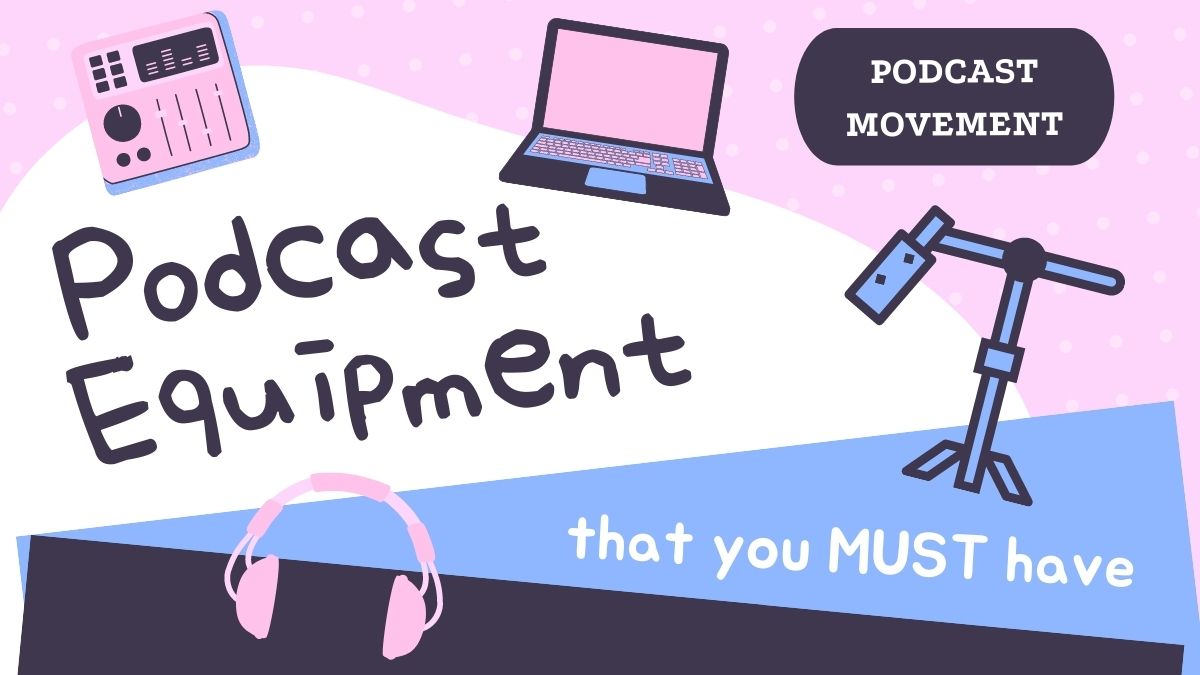Your podcast listeners are here for the audio, no doubt about that — but if you’re looking for engaging your audience more with your topic, being able to rely on visuals or media you can’t include, or even up your SEO, you might want to consider stepping outside of sound. Let’s talk about supplementary material to your podcast: namely, blog posts.![]()
Blog Basics: Beginning with SEO
Before we dive in, yes, blog posts are absolutely unnecessary to your podcast and will take time and effort. This isn’t about what your podcast must have; it’s about what you can do to make your podcast distinctive and especially polished.
If you’re already strapped for time and energy, don’t feel pressure to make blog posts as supplements to your podcasts. It’s okay. You’re doing great without them. But if you have the time and resources, supplementary material can be a great way to improve your SEO and enhance your listeners’ experiences.
The more text you have on your site, the more text can be indexed by search sites. If you have a podcast about, say, apples, you’ll be likely to attract more people if your site has words like “gala,” “red delicious,” “granny smith,” or the underrated apple-flavored soda, “Manzanita Sol” than if it just had “apple.”
If you had a wonderful guest on your podcast, people might find it by searching their name — but if they search, say, “Johnny Appleseed Cosmic Crisp” and your site has all of those words versus just an episode titled, “Episode 1: Johnny Appleseed,” you’ll be more likely to pop up.

Improving SEO is a good reason to do anything for a project, but it’s usually the least exciting reason to do something. If you know you should add supplemental material, but you don’t want to just farm keyword-heavy content, I have good news: not only do you not have to do that, you should not do that. SEO isn’t everything.
Quality Matters: Engage, Explain, Entertain
If you want to give new listeners a reason to check out your podcast, or if you want you current listeners to stick around longer, you have to make good content. Trying to shove as many keywords into a blog post as possible is almost never good content.

Instead, think of your supplemental material as required reading for your podcast. 99% Invisible is a great example for how to do this well. Take this blog post related to an episode on chili peppers. The blog post is a summary of the episode’s content, but it’s laden with images that help set the scene for the listener or reader.
It also links to sources, definitions, and other sites that can help their audience’s understanding. This accomplishes a few goals for 99% Invisible:
1. It shows that they use and cite sources, meaning they’re a reputable podcast when it comes to the information they share.
2. It helps explain concepts to the blog post’s reader without having to get too bogged down in definitions.
3. It helps the reader engage more fully in the podcast episode itself by letting them learn more on their own terms, which likely leads to:
4. More people being more informed, and sharing the knowledge they gained with more potential listeners in the future.
I don’t think this is why 99% Invisible creates blog posts for their episodes, at least not entirely. I think they do this because they, too, love sharing this information. The love of the subject matter always comes through — and if you’re reading this, I’m guessing you have the same love for what your podcast is about.
Expand on Strengths: Dig Deeper into Your Show
Not every podcast is a one topic-per-episode type of show. It might not be immediately clear what to add to your site as supplemental material. Here are some jumping off points you can consider when thinking about what types of supplemental material you’d write for your podcast if you want to try it out:
– For chatcasts, think about references you made in discussion. Maybe your co-host made a quick reference to a joke in Brooklyn 99. You could add a link to the clip, then write a sentence or two about why you and your co-host love Brooklyn 99, or what made them think about it while you were recording.

– For fancasts, adding images — especially GIFs — is a great way to engage the audience. You could write quick news updates on the media you discuss, talk about the progress of story arcs, or anything else that’s worth mentioning from the media but not quite worth a whole episode or discussion in the podcast itself.
– For fiction podcasts, there are a few different routes you could take that listeners would love. You could write quick scenes as told from another character’s perspective; or, you could link to what sources inspired you. Explain how those sources impacted how you wrote your fiction.
– For almost every other kind of podcast, think about what expertise you might have that your listeners might want to know. In Join the Party, a D&D ‘actual play' podcast, listeners might want to know how to be a better Dungeon Master — so the podcast has resources on new types of adventures to run.

– And for almost every kind of podcast, you’ll eventually run into the problem of describing something visually that your audience cannot see. Chuck a picture into a blog post, and bing bang boom, you’re golden.
Supplemental material can help your listener engage with your podcast more fully while also bringing more potential listeners to your podcast’s site. If you have the time and energy, try a few blog posts out, and see how your audience likes them. You might be surprised by how excited they are to read more from the creators that make your podcast great.
![]()



Join the Movement